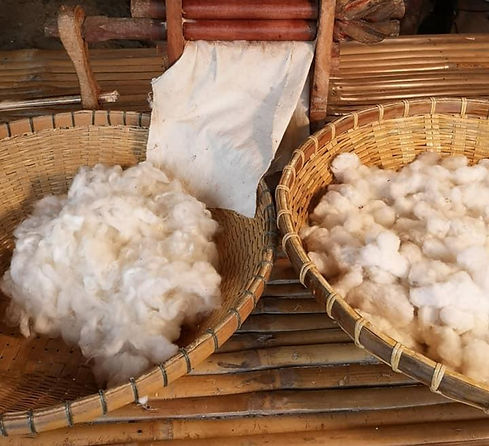
OUR PRODUCT
Recare Diapers are sustainable and cost-efficient, manufactured from agricultural waste: pineapple leaves. We have partnered with retirees in Rayong for the production process of pineapple fibers and women inmates at the Central Women's Correctional Institution who were instrumental in the sewing process. Furthermore, our diapers have been tested at the Thai Textile Institute and are water-absorbent.
CARE PACKAGE
In this project, we donated reusable diapers as part of our care package for our donation to the women’s emergency center.
The inspiration came from the outbreak of Covid-19, which affected many mothers with unwanted children financially when trying to raise their children well.
As diapers have taken a large proportion of their income (close to $936 per year) to raise a child, this has influenced a lack of provision to e.g. healthcare and education. The care packages consisted of reusable diapers, formula milk, self-made alcohol, toys and a guide on how to use, wash, adjust the size of the diaper and descriptions of fabric used in the diaper.
We aim to help empower and support young women through times of difficulty, especially this foundation where opportunities are given to women to flourish, grow and restart their lives.


RECARE DIAPERS
After the pineapple leaves are harvested, they go through decortication using a เครื่องรีด to produce cellulosic strands.
The Production Process
After the pineapple leaves are harvested, they go through decortication using a machine to produce cellulosic strands.


The Production Process
They are then washed and soaked and later dried in the sun for 1 to 2 days. Approximately 40-45 kilograms of fresh leaves will yield 1 kilogram of pineapple fibre.
The Production Process
Subsequently, skilled Rayong artisans weave together the warp and weft of the fabric to produce a durable pineapple-fibre cloth.



why diapers?
As well as the burden diapers pose for mothers, diapers also contribute to the environment as waste, thus threatening wildlife and pollution. Mass production of diapers is therefore problematic, with over 18 billion disposable diapers ending up in landfills annually. Hence, diapers stand as the third largest contributor to landfill in the world.
Around 27.4 Billion diapers are found in landfills per year
Composition of Our diapers
The pineapple fibres are combined with cotton in the ratio of 10:89 respectively. This ensures that the material of the fabric is not too rough and does not irritate the infant’s skin.
